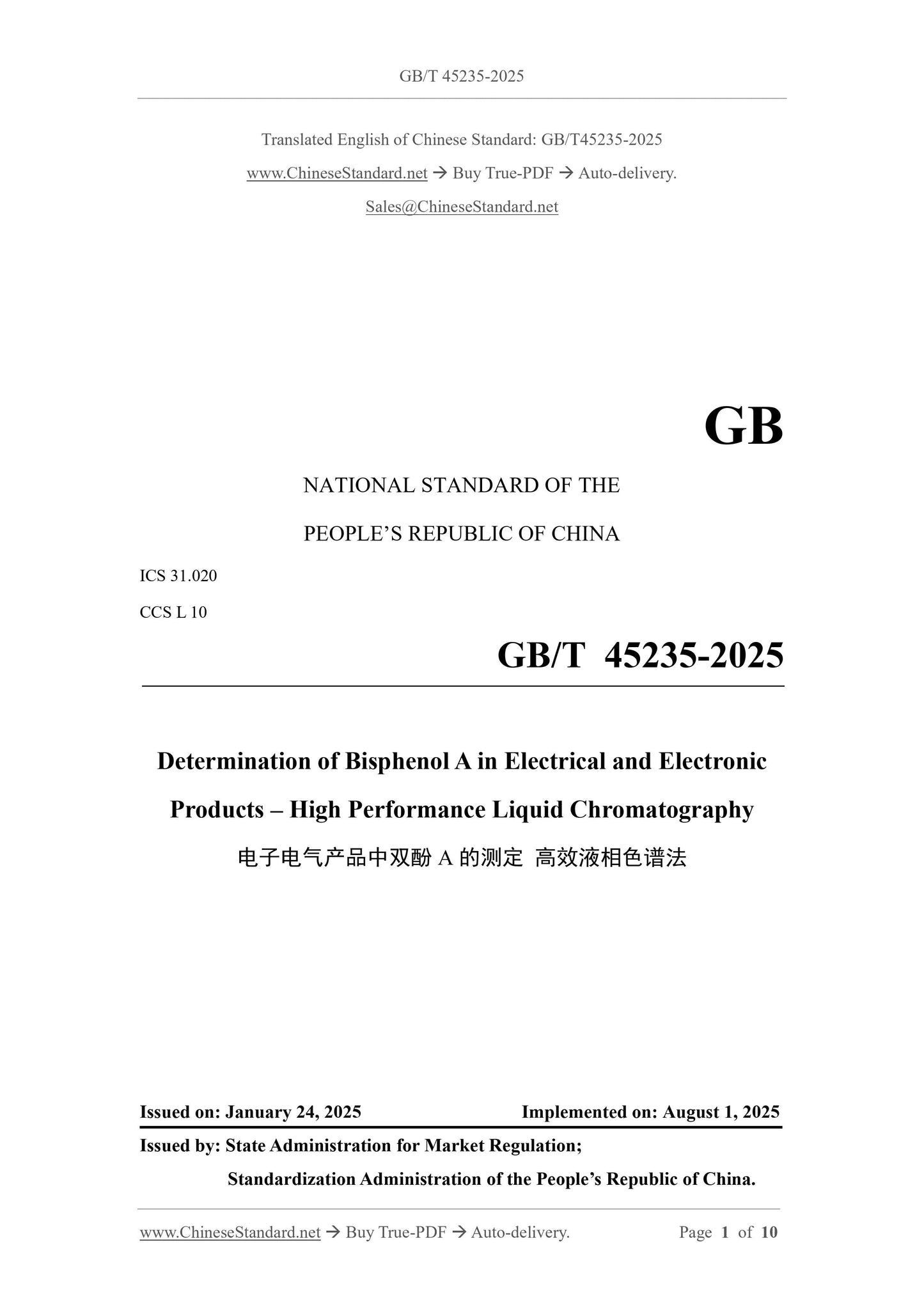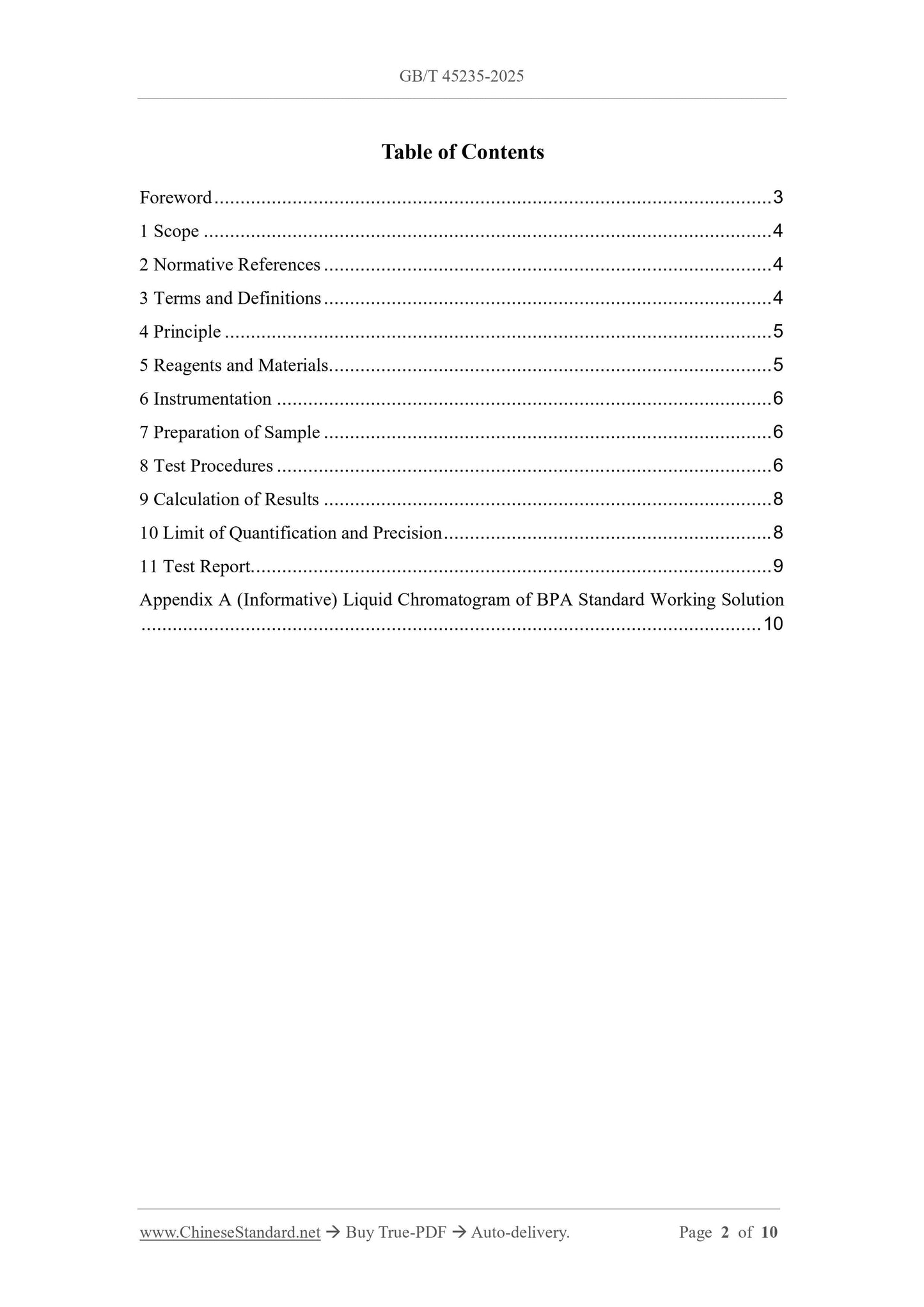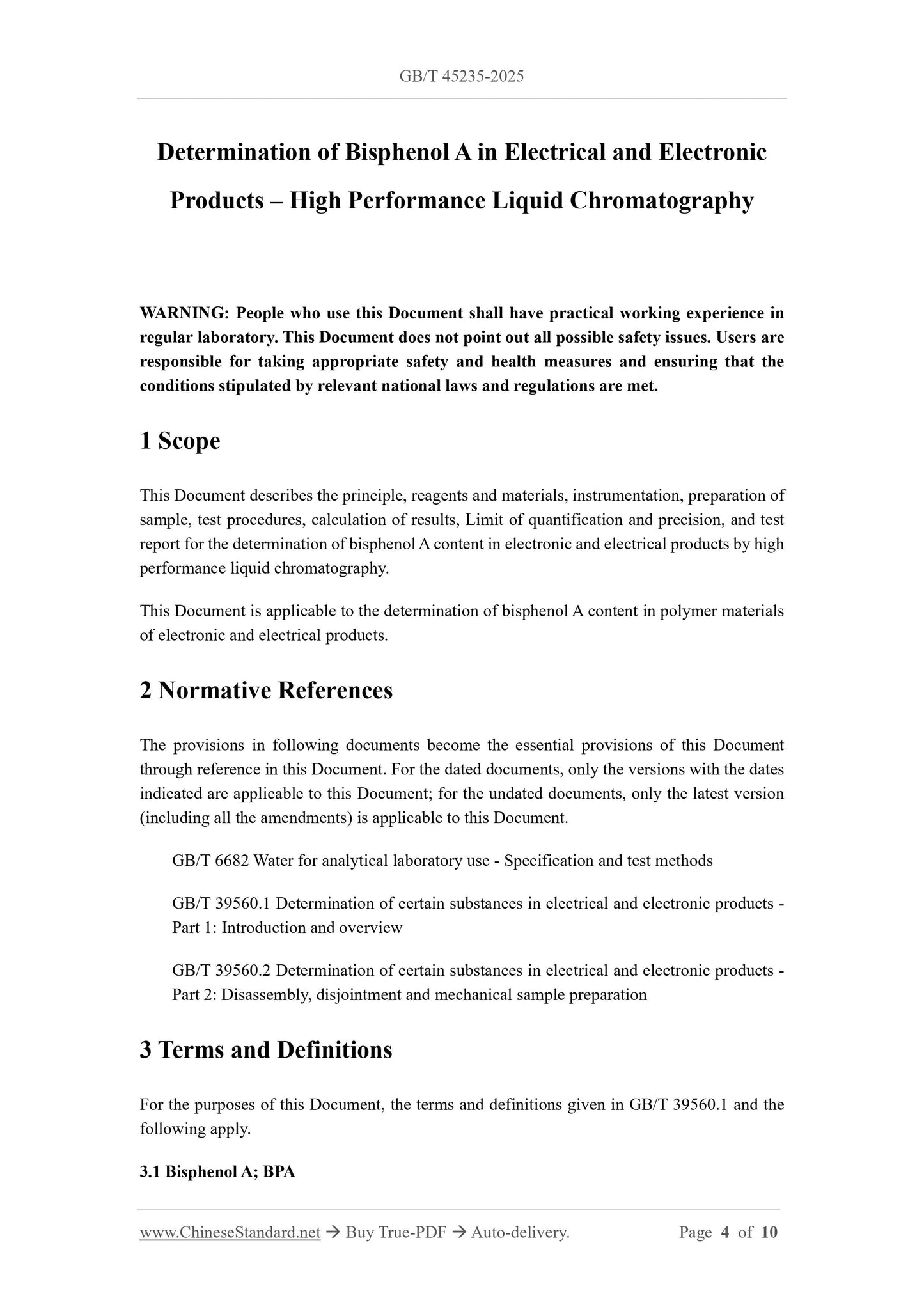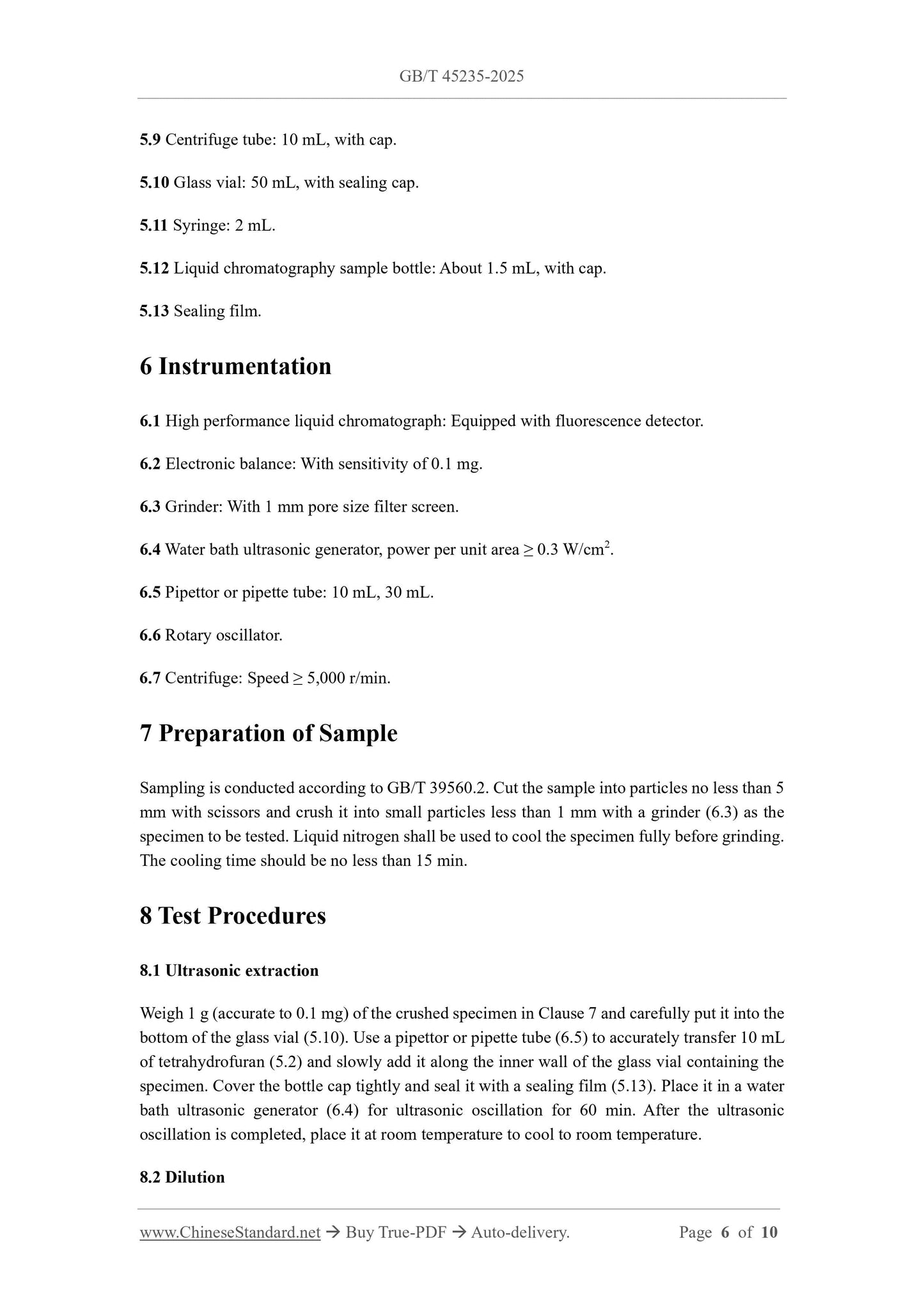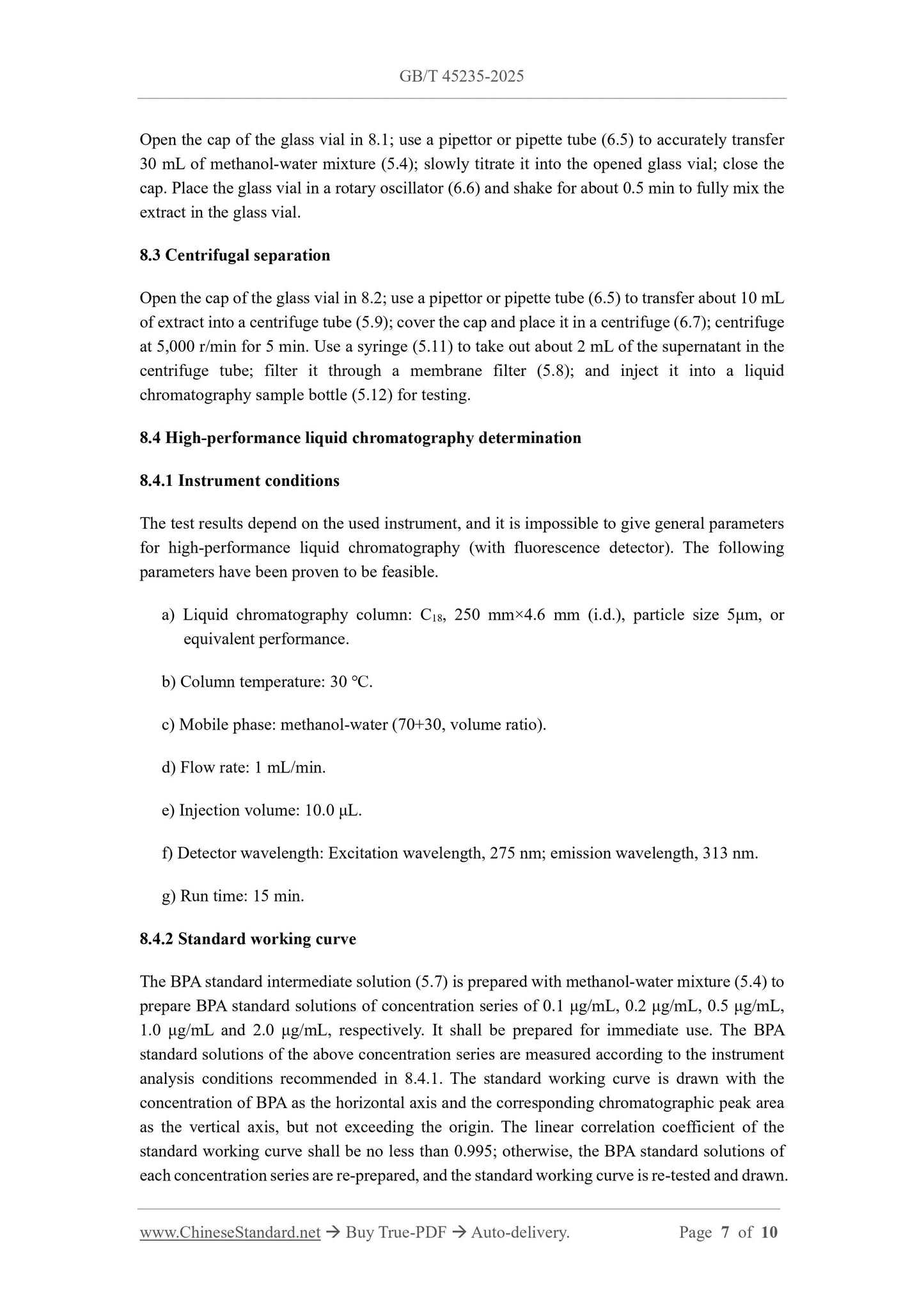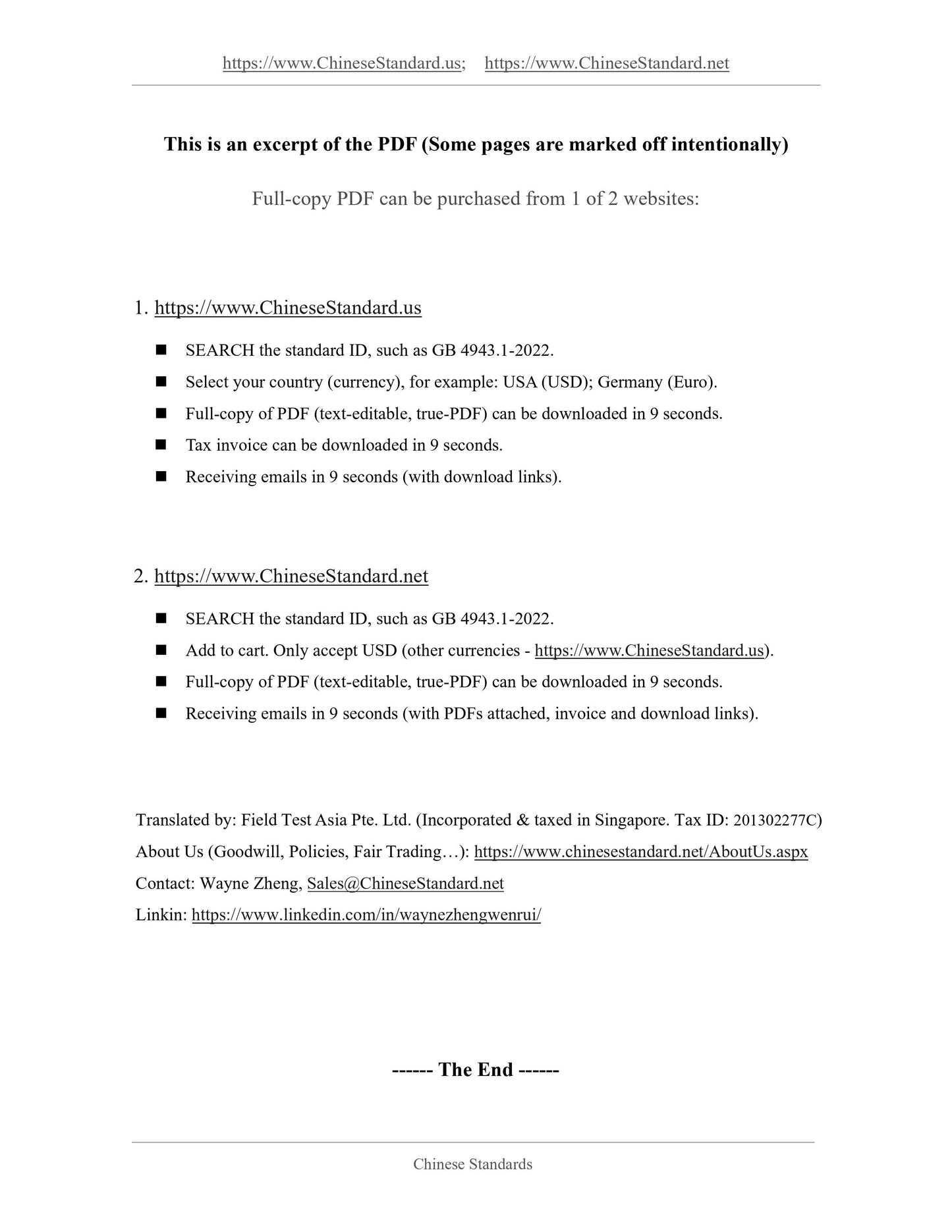1
/
of
6
www.ChineseStandard.us -- Field Test Asia Pte. Ltd.
GB/T 45235-2025 English PDF (GB/T45235-2025)
GB/T 45235-2025 English PDF (GB/T45235-2025)
Regular price
$215.00
Regular price
Sale price
$215.00
Unit price
/
per
Shipping calculated at checkout.
Couldn't load pickup availability
GB/T 45235-2025: Determination of bisphenol A in electrical and electronic products - High performance liquid chromatography
Delivery: 9 seconds. Download (and Email) true-PDF + Invoice.Get Quotation: Click GB/T 45235-2025 (Self-service in 1-minute)
Newer / historical versions: GB/T 45235-2025
Preview True-PDF
Scope
This Document describes the principle, reagents and materials, instrumentation, preparation ofsample, test procedures, calculation of results, Limit of quantification and precision, and test
report for the determination of bisphenol A content in electronic and electrical products by high
performance liquid chromatography.
This Document is applicable to the determination of bisphenol A content in polymer materials
of electronic and electrical products.
Basic Data
| Standard ID | GB/T 45235-2025 (GB/T45235-2025) |
| Description (Translated English) | Determination of bisphenol A in electrical and electronic products - High performance liquid chromatography |
| Sector / Industry | National Standard (Recommended) |
| Classification of Chinese Standard | L10 |
| Classification of International Standard | 31.020 |
| Word Count Estimation | 10,123 |
| Date of Issue | 2025-01-24 |
| Date of Implementation | 2025-08-01 |
| Issuing agency(ies) | State Administration for Market Regulation, China National Standardization Administration |
Share
